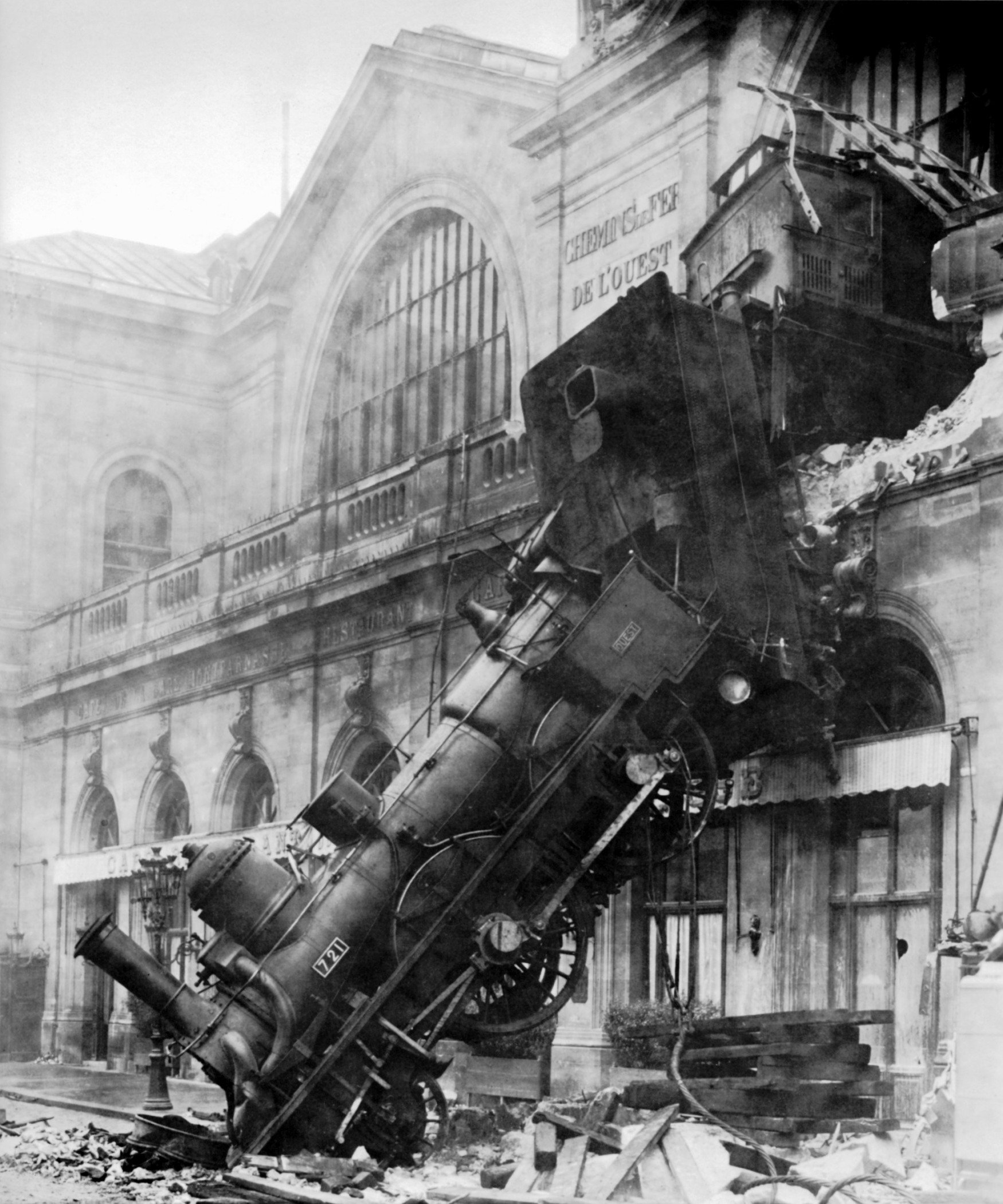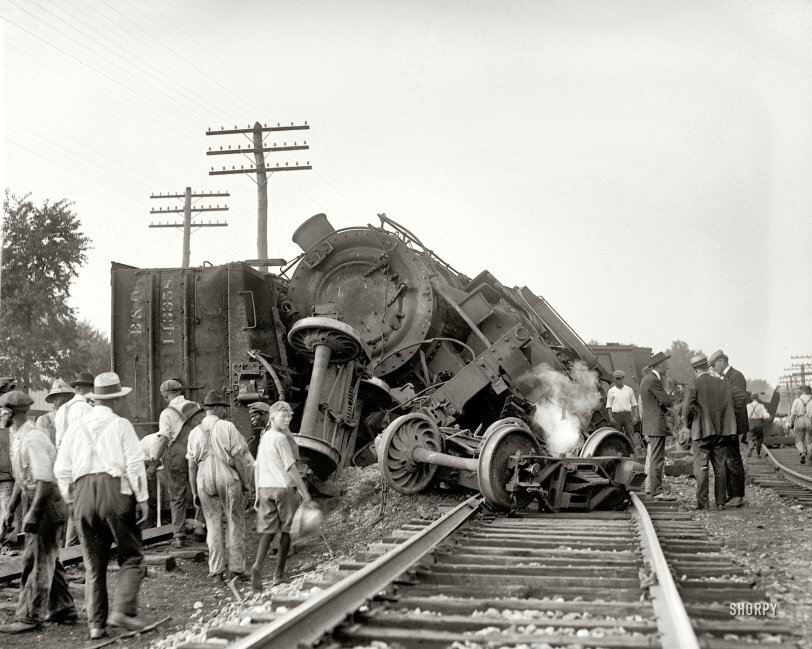America has had its share of old train wrecks which occupy a unique niche in the historic landscape. These eerie locations narrate tales of excitement, misfortune and sometimes even enigma. In probing into these remains, we arrive at the bygone with its teachings as well. Join us as we sail into the captivating world of train casualties!
Historical Significance of Train Wrecks

Train accidents happen for many reasons, yet they function as historical markers for the evolution of transportation. This is important for the following reasons:
- Technological Progress: Each wreck often leads to advancements in safety and engineering.
- Social Impact: Major wrecks affected communities, influencing regulations and awareness.
- Cultural Reflection: Train wrecks appear in literature and art, shaping public perception.
It is common for train crashes to stimulate inquiries that resulted in improved methods, highlighting the need to draw lessons from history. They serve as a reminder of the fact that most advancements are made at a cost.
Famous Train Wrecks Across the USA
In the past, there have been several train wrecks that have got people talking. Below is a list of a few of them that stand out:
| Wreck Name | Year | Location | Details |
|---|
| The Great Train Wreck of 1918 | 1918 | Texas | Involved over 600 people, leading to numerous casualties. |
| The Big Bayou Canot Train Disaster | 1993 | Alabama | Resulted in a collision due to a misplaced switch. |
| The Wreck of the Old 97 | 1903 | Virginia | Famous for its connection to the folk song. |
Every single one of these incidents narrates the tale of human fault, erraticness of Nature and steady search for safety in railway sector. They are a wake-up call to all of us on the need for caution and new ideas.
Photographic Techniques for Capturing Wrecks
The secret to capturing the true essence of antique train wrecks lies in the photographer’s perspective and their use of distinct photographic methods. These are some helpful hints for both beginner and experienced photographers who want to maximize their shots:
- Choose the Right Time: Early morning or late afternoon offers the best light.
- Utilize Angles: Experiment with different perspectives to showcase the wreck's scale.
- Incorporate Surroundings: Capture the natural landscape around the wreck to add context.
- Use HDR Techniques: High Dynamic Range photography can enhance details in both shadows and highlights.
- Focus on Textures: Highlight rust and decay to emphasize the passage of time.
Please keep in mind that your
images should narrate a story. This implies that you should explore other avenues creatively without being in haste.
Preserving the History of Train Wrecks
It is significant to reserve the history of train disasters so as to benefit forthcoming ages. A number of methods can be employed in order to reach this objective:
- Documentation: Collect stories and photographs from survivors or local historians.
- Restoration Projects: Participate in efforts to restore wreck sites as historical landmarks.
- Public Education: Create programs that teach about the importance of rail safety and history.
- Virtual Archives: Develop online databases to preserve records and images.
In taking these measures, we make sure that the lessons drawn from these unfortunate occurrences are remembered.
Exploring Abandoned Train Wreck Sites
Hopping on to the sites of abandoned train wrecks could be an adventure full of history and curiosity. So, if you want safety and significance in your voyage, here are some suggestions:
- Research Locations: Find out which sites are accessible and historically significant.
- Safety First: Always prioritize safety; wear appropriate gear and be cautious of unstable structures.
- Document Your Findings: Take photos and notes to help share your experience with others.
- Respect the Site: Leave no trace; ensure you preserve the integrity of the wreck.
Visiting these places enhances your railway history knowledge and also takes you back in time. Have a nice trip!
Impact of Nature on Train Wrecks
The nature has an interesting way of linking the train wrecks together, often making them into beautiful arts. Over time, elements may alter the sites’ appearance and integrity. Some major effects are as follows:
- Rust and Decay: Rain, humidity, and temperature fluctuations contribute to rust, which can create stunning textures and colors.
- Vegetation Growth: Plants and trees reclaiming the wreck can create a beautiful contrast, making the wreck feel like part of the landscape.
- Weathering Effects: Wind and water erosion gradually reshape the wrecks, giving them a unique character.
- Wildlife Habitats: Many wrecks become homes for various species, showcasing how life finds a way in unexpected places.
Such components of nature do not just improve the visual aspect but also remind us about the strengths and the endurance of nature. It is a lovely cycle characterized by decay and re-growth.
FAQs about Old Train Wrecks
To make your understanding of ancient train catastrophes easier, here are some commonly posed queries regarding wrecked locomotives used in earlier times:
What causes train wrecks?
- Various factors like human error, mechanical failure, and natural disasters contribute to train wrecks.
Are train wreck sites safe to visit?
- Many sites can be dangerous due to unstable structures, so always prioritize safety and check local guidelines.
Can I take photos at train wrecks?
- Yes, but be respectful of the site and follow any regulations in place.
What should I know before visiting a wreck site?
- Research the history, ensure you have the right gear, and follow any access rules.
If you want to enhance your experience and appreciation of these historic sites, you must be able to comprehend these questions.
Conclusion on the Fascination with Train Wrecks
This causes people so much intrigue because it is not just their ghostly beauty that makes them do so. They serve as touching examples from history, displaying advancements in transport but also their downfalls. Here’s why they fascinate us:
- Historical Insight: Each wreck tells a story, connecting us to past events and the people involved.
- Cultural Significance: Train wrecks often appear in folklore, literature, and art, enriching our cultural narrative.
- Natural Beauty: The way nature interacts with these wrecks creates stunning visuals that captivate photographers and explorers alike.
Ultimately, aging train disasters urge us to reflect not only on their causes but also the principles that should be carried into the future.They remind us safety matters; novel ideas are indispensable; honoring the past is still paramount. Thus, all who visit these wrecks – be it an amateur photographer focusing on landscapes or an eager historian fleshing out time arguments will find something of interest.
 Train accidents happen for many reasons, yet they function as historical markers for the evolution of transportation. This is important for the following reasons:
Train accidents happen for many reasons, yet they function as historical markers for the evolution of transportation. This is important for the following reasons:
 admin
admin








